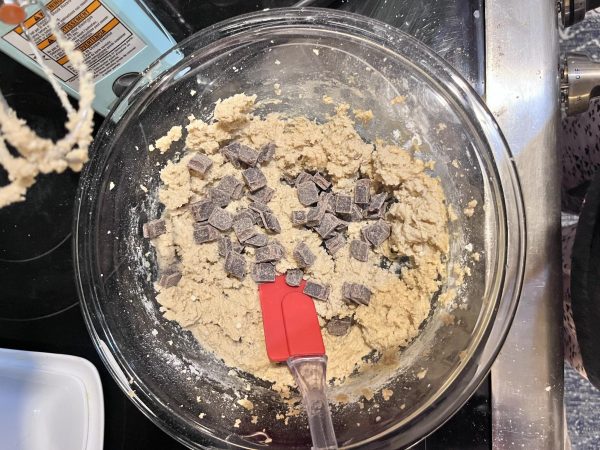In a World of Reckless Excess: How To Recycle and Consume Less
We hear it more and more every day. Climate change is accelerating. From raging wildfires in California to increasingly acidic oceans to retreating glaciers to flash floods, it seems global warming is behind so many of the world’s problems. Hurricanes are even becoming more dangerous as they grow in intensity, animals’ habitats are being threatened, and worldwide agriculture is being endangered by diseases that thrive in the warmer temperatures. There’s no denying how massive of a scale our environmental problems have reached. With our generation’s own Greta Thunberg at the helm, striking protests have emerged. There is, after all, “no Planet B.”
Many of us have been moved enough to support the mission of movements like Thunberg’s “School Strike for Climate” with our words and ideals, but only a few have gone as far as to support it with our actions. Reducing your impact can seem daunting and overwhelming, especially with a media focus on the extremes, like those who put out so little trash they consider themselves zero waste.
Instead, I give you this article, a step-by-step guide to reducing your carbon footprint in manageable ways and in turn decreasing the amount of pollution you contribute directly to what popular media is beginning to refer to as the climate crisis. Each of us matters to the ecosystem of our world. Following these steps will allow you to do your part toward slowing down the impact of global warming.
Step 1: Recycle and Sort Trash – Do as the Germans Do
In the global arena, Germany is far and above one of the most progressive countries when it comes to the environment, and in the case of recycling, we can certainly take a leaf from their book.
Germans sort their trash into six bins: one for paper and cardboard, two for glass (one colored, one clear), one for plastic and metal that’s designated recyclable, one for biodegradable food and paper, and one for everything else. Though clearly that system is set up by German infrastructure (the government has to sponsor the bins), we can follow their example and cut up to half of our trash by managing it and sorting it.
Put all of your paper and plastic directly into the recycling bin (after washing if necessary), and make sure your metal cans end up there too! Recycling in DeKalb County must not be bagged (bags get caught in their machinery), so just dump it loose into your blue bin. Unfortunately, DeKalb no longer accepts glass, so glass can be dropped off at county-operated glass recycling drop-off locations instead, including Blackburn Park, Brook Run Park, the Dunwoody Library and Medlock Park. Also try starting a compost bin. A huge fraction of kitchen waste could simply be reintegrated into the soil and not damage the environment, and it helps fertilize your garden as well!
I’ll also say this now: Why throw away something you could reuse a different way? Try reusing unwanted products in other ways, or donate so somebody else can use them.
Step 2: Find Green Transportation – Even in Traffic-Congested Atlanta
We all know our city is terrible when it comes to traffic. Our highways are some of the most crowded in the country, and our main streets nearby, like Chamblee-Dunwoody and Peachtree Industrial, get clogged super easily, so there’s something to be said about not contributing to the traffic epidemic.
One easy way to go about this is finding some other ways around, like taking the MARTA when you’re going downtown. The Chamblee MARTA station is entirely free to park at, and it’s surprisingly efficient to ride, but you can also find one closer to where you live. Atlanta doesn’t have the most accessible and far-reaching public transportation system, but it is great for anywhere downtown. I’ve taken the MARTA to Inman Park to go to Ponce City Market, and it’s honestly way quicker and a lot more environmentally friendly than braving it out on I-285. Atlanta even has a streetcar now with a 2.7 mile loop for all your downtown needs.
Most of the time, there’s no way around driving cars in Atlanta, but just a moment’s thought if you have any alternative options, like walking, biking or even MARTA, when you’re going somewhere can be just enough to do your part for the environment. Carpooling to school or to any sort of weekend events you may have can also cut your pollution down from two or three to just one car, so that’s also a great consideration to take before a trip.

A map of the MARTA rail lines.
Step 3: Food and Water – How to Curb Your Essentials to the Earth
What food you purchase has a considerable impact on the planet. By paying for a certain apple or orange over another, you’re essentially casting a vote for that kind of production by giving that company the means to carry on. You want to support produce that’s both locally produced and organic. Locally produced means the company has only transported your food a hundred or so miles instead of thousands, releasing less greenhouse gases, and organic often means less pesticides have been used, so less phosphates and nitrates have gone directly into polluting the water supply and messing with our chemical balances. It’s quite simple to just check the sticker on your fruits and veggies, and it can have a large impact.
Eating less beef and dairy is often a moral consideration, but it also has an environmental impact. Much of America’s beef comes from cows in Brazil, grazing on lands cleared by chopping down one of the world’s most needed carbon sinks, the Amazon rainforest, so cut back on these products if you want to help.
Water-wise, there’s not a lot to say. Just cut back: take shorter showers, turn off the water while you brush your teeth, check your hoses and faucets for leaks… you know the drill. It’s super important.

An infographic from Lean and Green Cafe San Diego gives you nine essential reasons to buy local food.
Step 4: Power is Power: Monitor Your Electricity
One of the biggest contributors to the climate crisis is the use of coal, oil and other damaging energy sources that produce our electricity but also put out too much carbon dioxide. I know most of us have very little say over where our energy comes from, but do what you can to advocate for cleaner energy. The City of Atlanta has recently adopted a 100% Clean Energy Plan this March to consider and manage the energy sources of its operations and develop strategies to achieve 100% clean energy by 2035, legislation that was completely motivated by citizen advocacy. With our help, maybe we can extend this over an even greater area than just the city.
When it comes to electricity, cutting down on how much you use is even more important. If you can’t influence where it comes from, at least you can do something about the amount you consume, and the standard tips, like turn off the lights when you leave a room or unplug your devices when you’re gone on vacation, do a lot to reduce how much coal is burned in the first place.
“What appliances should you cut down on?” Graphic courtesy of Roofandfloor
Step 5: Advocate!
If nothing in this guide has been too new to you yet, this section is for you! There are opportunities for you to volunteer and advocate that are specific to Atlanta and take you one step further than simply working on your consumption.
Here are five great organizations to check out:
- The Nature Conservancy: Georgia’s chapter is working to conserve habitats, specifically our woods, waters and coast.
- Trees Atlanta: This is a super active organization that plants trees and advocates to protect forest within the city.
- Hands On Atlanta: This is a volunteer organization for all sorts of different things, and they have many opportunities focused on the environment too.
- EarthShare Georgia: They work to connect people with all sorts of nonprofits that help the Earth. Visit that link for dozens of options, including Georgia Forest Watch and Georgia Wildlife Federation.
- Chattahoochee Riverkeeper: Volunteer to help keep our Chattahoochee and the land nearby clean and safe!
I’ll give credit where credit is due, so check out this article for more information.
You can also advocate and support any other groups that are working for the environment by donating or volunteering. Emory is a great example of an institution that is furthering the mission of sustainability, reclaiming 40% in a water conservation facility they call WaterHub and recycling 72.6% of their waste away from landfills.
There are so many great organizations out there, so do your research, and play your part in government by voting or writing to our representatives to establish legislation that also works for the environment! Participating in protests, like the growing school strike for climate movement, also makes a powerful statement.
Only through advocacy and cutting back on our carbon footprints can we work towards a greener world, and we all can do our part to combat the climate crisis. Hopefully, this guide has at least reminded you that we all make an impact–whether it’s good or bad is totally up to you.
Your donation will support the student journalists of Chamblee High School Blue & Gold. Your contribution will allow us to print editions of our work and cover our annual website hosting costs. Currently, we are working to fund a Halloween satire edition.

Catherine Cossaboom is a senior and editor of the Blue & Gold. In her free time, you can find her solving way too many math problems, going on wandering walks to make friends with the deer in her neighborhood, and training her kittens to compete at the next Kentucky Derby. In five years, she hopes to be traveling across the country, running math circles, writing columns, and turning math into a performance art to empower girls to take on the world's problems. This is her third year on the staff.






Sandra Flood • Dec 14, 2019 at 12:59 pm
Very informative article! We are inspired to take more measures to save our planet. Thanks!